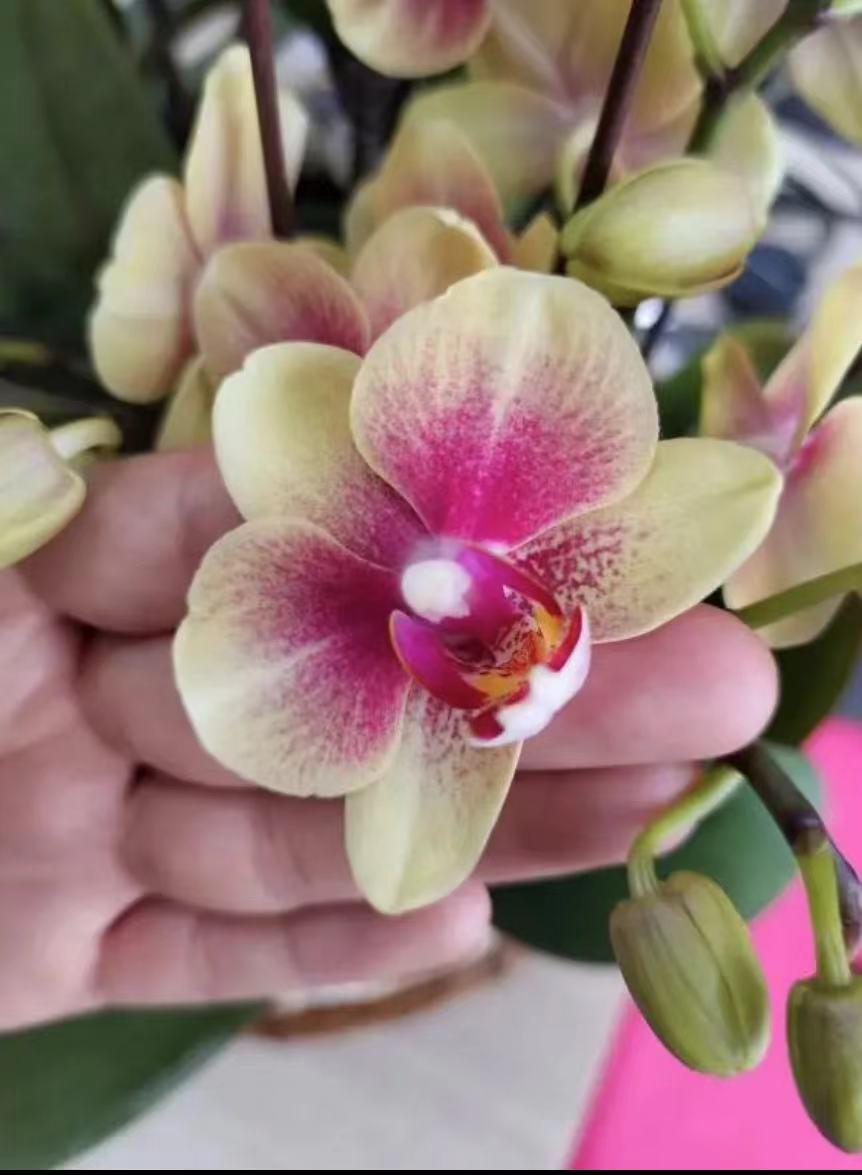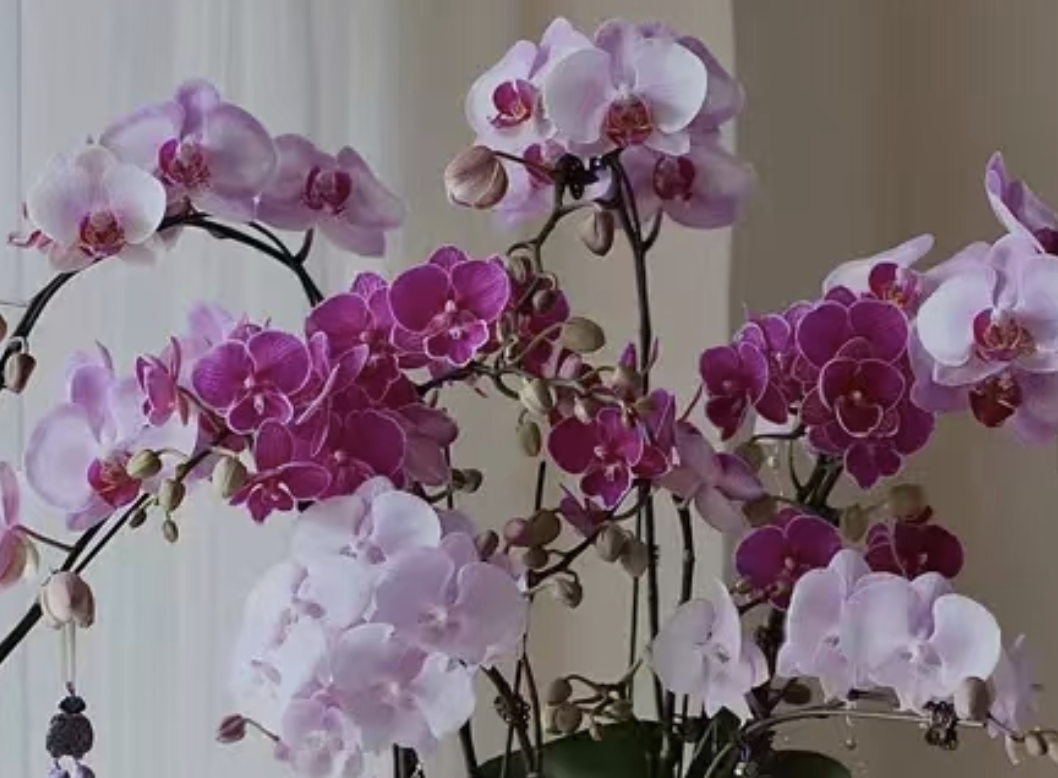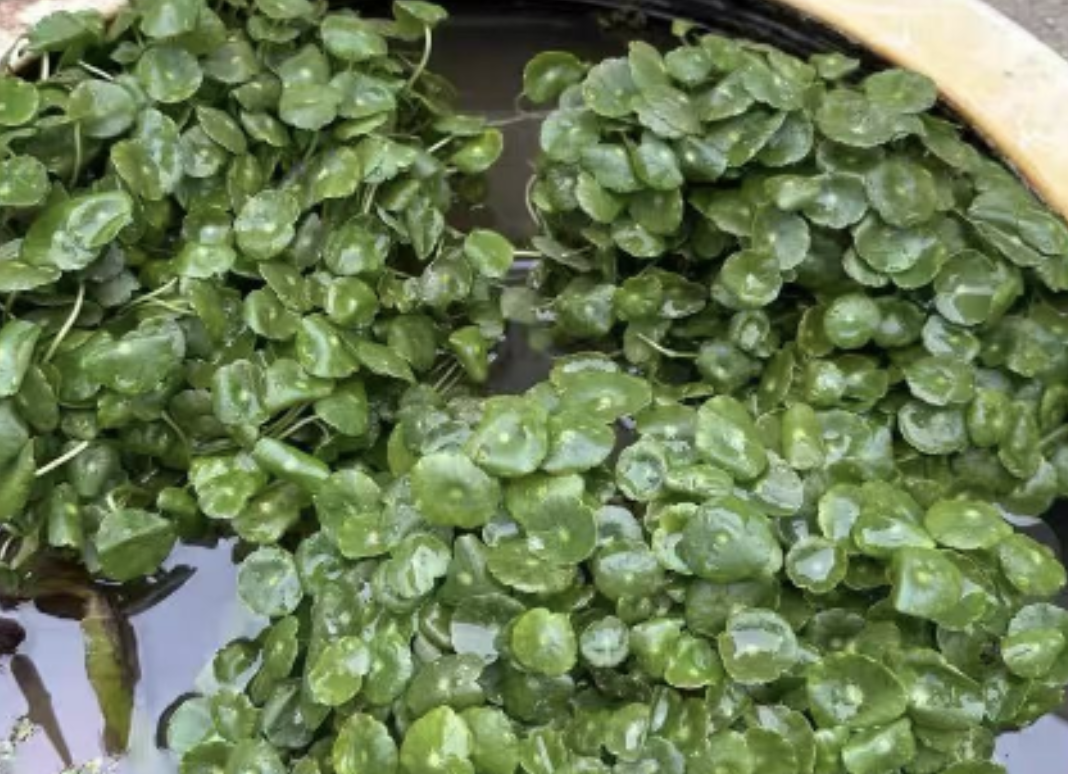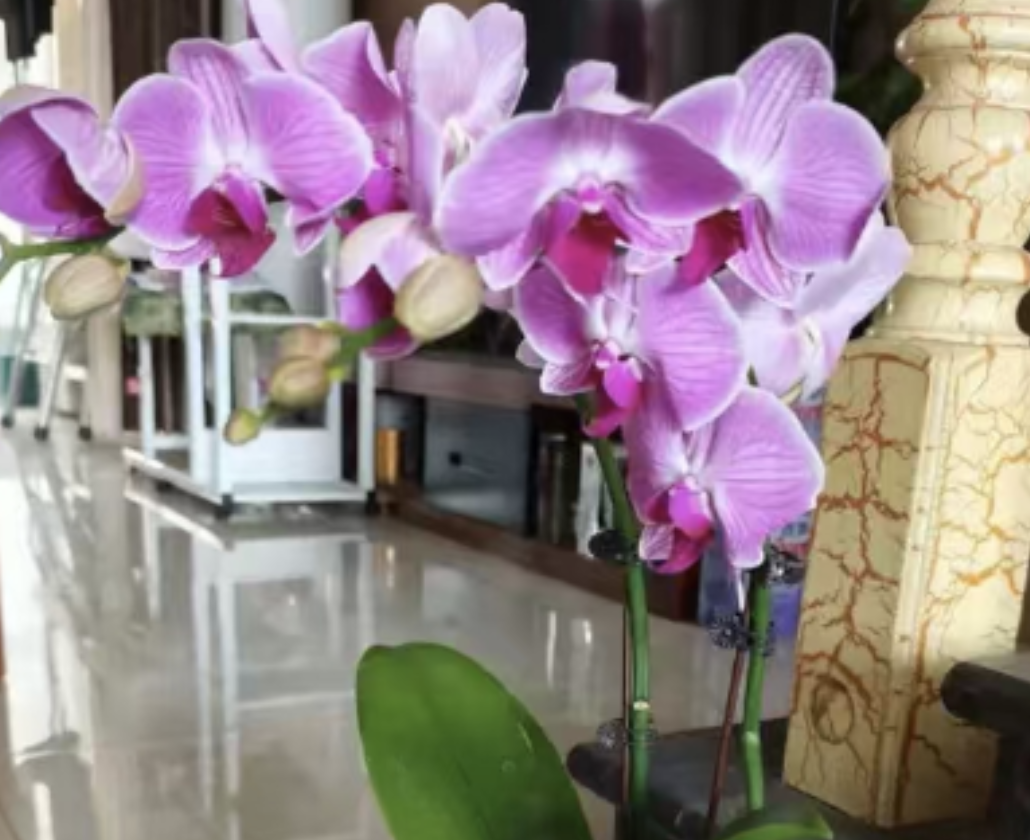During the cultivation process of Phalaenopsis, the problem of yellowing leaves of Phalaenopsis 'Jubao Pen' occurs from time to time. At the same time, people often wonder whether Phalaenopsis 'Jubao Pen' is easy to cultivate.
First, let's analyze the reasons for the yellowing of the leaves of Phalaenopsis 'Jubao Pen'. Improper water management is one of the common factors causing leaf yellowing. Phalaenopsis 'Jubao Pen' likes a high-humidity environment, but excessive watering can lead to oxygen deficiency and root rot in the roots, thereby affecting the absorption of water and nutrients and causing the leaves to turn yellow. On the contrary, long-term water shortage will cause poor growth of the plant, and the leaves will also turn yellow and dry due to water shortage.
Light conditions are crucial for the growth of Phalaenopsis 'Jubao Pen'. Direct strong sunlight can burn the leaves, which then turn yellow; while insufficient light will affect photosynthesis, resulting in the leaves lacking nutrients and turning yellow in color.
Improper fertilization can also cause the problem of leaf yellowing. Excessive fertilization can cause fertilizer damage, damage the roots, and affect the normal growth of the leaves; insufficient fertilization will lead to malnutrition of the plant, and the leaves will gradually lose their green color. Unsuitable temperature can also affect the growth of Phalaenopsis 'Jubao Pen'. Both excessively high and low temperatures can cause damage to the plant, resulting in yellowing and wilting of the leaves.
The invasion of pests and diseases is also an important reason for leaf yellowing. For example, diseases such as leaf spot and anthrax can cause yellow or black spots on the leaves, which then lead to leaf yellowing; and pests such as scale insects and red spiders suck the sap of the leaves, which can also cause the leaves to lose their luster and gradually turn yellow.
So, is Phalaenopsis 'Jubao Pen' easy to cultivate? After mastering the correct cultivation methods, it is relatively easy to cultivate. To cultivate Phalaenopsis 'Jubao Pen' well, first pay attention to light management. It is suitable to grow in an environment with sufficient scattered light and avoid direct sunlight. It can be placed in a bright position near the window indoors or use a shade net to adjust the light intensity.
Temperature control is also crucial. The suitable growth temperature of Phalaenopsis 'Jubao Pen' is between 18 - 28 degrees Celsius. During high temperatures in summer, pay attention to ventilation and cooling; during low temperatures in winter, take good heat preservation measures to avoid the plant from being frozen.
Regarding watering, the principle of "water when dry, stop when wet" should be followed. Keep the medium moist but not overly wet. Usually, water 1 - 2 times a week. The specific frequency should be adjusted according to environmental humidity and seasonal changes. At the same time, spray water around the plant frequently to increase air humidity. Fertilization should be appropriate and balanced.
During the growing season, a thin liquid fertilizer can be applied every 1 - 2 weeks. Choose fertilizers specially formulated for Phalaenopsis and dilute and use them according to the instructions. Regularly inspect the plants to detect and deal with pests and diseases in time. Once a disease is found, cut off the infected leaves in time and use the corresponding pesticides for prevention and control; for pests, physical or biological control methods can be used for treatment.
Choosing the right cultivation medium is also very important. Phalaenopsis 'Jubao Pen' is usually cultivated using media with good air permeability and strong water retention such as sphagnum moss and bark.
Although Phalaenopsis 'Jubao Pen' may have problems such as yellowing leaves during the cultivation process, as long as we understand its growth habits, master the correct cultivation methods, and provide it with a suitable growth environment, it can thrive.
What causes the yellowing of the leaves of Phalaenopsis 'Jubao Pen'?

Share with
Tagged in :




Leave a Reply